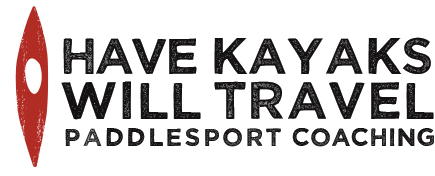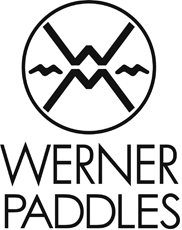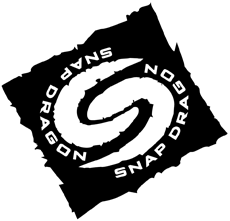We just completed four immersive days (and nights) at the 30th annual Great Lakes Sea Kayak Symposium — the oldest kayak symposium in the country, and one with an impressive pedigree. This is the symposium begun by Stan Chladek, who introduced British sea kayaks to the United States and helped jump-start BCU programming and the sport of sea kayaking in North America. We were fortunate to be asked to teach a “one coach” program this year, allowing us to work with the same 10 students (and one coach mentee) for three and a half days. Students who choose this track are generally seeking a consistent, sequential program delivered over the course of the symposium, as opposed to exposure to numerous coaches offering specific skills sessions. For us, it’s an honor to have that trust. They’ve opted not to take a raft of attractive three-hour courses (offered by a raft of attractive coaches) in order to work with us. The one-coach track allows us to develop a progression for a group of students. This is especially interesting to us right now because we’re working toward our BCU UKCC Level 2 Certificate in Coaching Paddlesport, which is defined by the ability to “safely deliver a series of pre-planned Paddlesport activities to a variety of different participants” as well as to develop and evaluate those participants’ performance, and review our own coaching sessions. It was a great incubator for a lot of the coaching practices we’ve been working on, from diverse coaching strategies to engaging and effective activities. We received feedback in several forms: our students’ level of engagement, their improvement, and their comments to us throughout the course and afterwards. Pictured Rocks National Lakeshore offered an extra opportunity to get feedback, in the form of how well our students were able to use their skills on a journey in a sometimes challenging environment. And a final video analysis session validated their improvement and gave them additional tools for working on their own. In the end, the one-coach track was progressive not only for our students, but for us. Coaching itself is a progression. Good coaches are always seeking ways to improve and to assess their effectiveness. We really appreciate opportunities to practice and progress as coaches, and we’re grateful to the organizers of the symposium and to all of our students for allowing us to continue on that...
The “Jamestown Circumcision” and other Rhode Island adventures
Wherever we paddle, we reconnect with old friends and meet new ones on the water. After our Ocean Skills Workshop, we spent a few hours surfing with Matt Bosgraaf, inventory manager for the Kayak Centre of Rhode Island, and Derek, who teaches courses for the Kayak Centre in the summer. Then we set out on a longer paddle with our friend Tim Motte, who coordinates a lot of paddles for the Rhode Island Canoe & Kayak Association. Tim helped us knit together several of the places we had paddled during the previous week, introducing us to features between and beyond them. This included what has been dubbed the “Jamestown Circumcision”–out from Fort Wetherill State Park, around Beavertail State Park, into Dutch Island Harbor, with a portage across a road and a beach before paddling back through Mackerel Cove to Fort Wetherill. It doesn’t take much swell to create exciting conditions along the shore and between offshore rocks. It’s all about timing, positioning, boat handling…and luck. We often talk about the value of “local knowledge”–the wisdom of people who are familiar with their own environment. Connecting with east coast paddlers is enabling us to gain a better understanding of the Rhode Island coastline much more quickly than would otherwise be possible. On our final day in Rhode Island, we reconnected with several other friends from our visit last year: Lorrie and Phil from Boston, and Tim and John from Rhode Island. We set out from Sakonnet Harbor in the fog, finding our way with the help of navigation we had done on land before launching. We were able to appreciate, once again, this spectacular area and the friends we’ve made here. We’re looking forward to returning next...
No rest for the weary
Day five of our Ocean Skills Workshop was supposed to be shorter and less intense than the previous days for two reasons: people needed some rest after the Block Island trip, and we wanted to go for a sunset paddle that evening. It was to be a skills day: paddling in current, doing self and assisted rescues in bumpy water, and perhaps working on rolls. But between the opportunities provided by the environment and the determination of the group, it ended up being another full day. The current at the end of the Charlestown Breachway created standing waves and pressure-tested skills in dynamic conditions. At some point during the day, the group decided that continuing to work on skills was more important than stopping early in order to go for a sunset paddle. But somehow, both happened. The final day of the workshop included a visit to a tidal race, as well as some more navigation in current on the way there and back. Looking back, the six days formed an effective introduction to everything we love about the ocean: surf, swell and rocks; navigation in tides and currents; off-shore journeys and tidal races; salt water and sunsets. As we said our good-byes and packed up our salt-crusted gear, we all agreed that we’d be back again next...
Birthday paddle to Block Island
Block Island is among the elusive destinations for many paddlers. It requires an 8.5-mile open crossing through an area with significant and complex tidal currents and boat traffic, and then another four or more miles to reach the ferry dock. It can be windy and suddenly foggy. We found an excellent description of the challenges on a blog called Wind Against Current, maintained by two brilliant scientist/paddlers. Other challenges can arise, too. The first time Scott Fairty tried to paddle this route, his wife went into labor. Subsequent attempts were thwarted by adverse conditions. This time it was his own birthday, and conditions were perfect for another attempt. Offshore winds and following seas sped us along, and an ebb tide required us to be on our navigation. If you miss the island, you’re seriously out to sea. We decided to tackle the more challenging route around the west and south sides of the island to the ferry dock on the east side. After all, it was a rare opportunity to paddle that often treacherous coast. Twelve miles and four hours later, we landed on a quiet beach on the west side of Block Island for a late and much-needed lunch. This left us about nine more miles down and around to the east side of the island. The coast was all sandy cliffs with many rock gardens offshore. On a day with significant swell, it would have been a difficult and potentially dangerous route, but on this day, it was just fun. By the time we arrived at the ferry dock, it was definitely dinner time. We had paddled 21 sometimes strenuous miles in a variety of sea states, and were pleased with our accomplishment. After dinner, we set the kayaks next to the ferry and waited as all the passengers on foot or bicycles or in cars boarded first. Then we scrambled to get all the kayaks on board. We watched the sun set as we sped back to the mainland, marveling at the vastness of the water we had paddled earlier that day. What is the allure of crossings of this type? After all, most of our most interesting paddling is where the sea meets the shore. But the combination of the exposure and the elusiveness of the destination has a unique appeal; the force of the ocean and the vastness of the vista remind us just how small we are, and reinforce the importance of skill and strategy over...
The ocean is our clasroom
The third day of our Ocean Skills Workshop involved crossing a busy shipping channel to get from Fort Wetherill State Park to Brenton Point State Park . But first, we had to figure our exactly where we were on our chart. So we began by seeking out aids to navigation (buoys, lighthouses) and land features and orienting ourselves in relation to them. Once we established our position, we were ready to set a course and launch. We kept close and kept up a fast pace across the channel. Traffic wasn’t as busy as it would have been on a weekend, but it was busy enough to warrant caution. When we reached the Newport shoreline, we slowed the pace and poked into slots, enjoying the movement of the water over and around rocks. We worked our way around to the State Park, where we stopped for lunch. After lunch, it was hard to resist a little detour to see the Newport Mansions and surf some of the swell over nearby rocks. But we knew that the forecast included storms in the afternoon; we had chosen this route because of it. And as the sky darkened and the temperature dropped, it was clear that the safest course was the most direct one back to Fort Wetherill. We kept our eyes on the clouds as we paddled back, watching for any electrical activity. Had we seen any lightning, we would have split the group and bolted for the nearest safe landing site. But that need didn’t arise. Before crossing to Fort Wetherill, we checked the radar and determined that we had time to paddle that exposed portion. As we arrived on the other side, rain pelted down, but the most ominous skies were no longer above us. If you paddle often, you’ll get caught on the water when bad weather moves in. The key is to keep calm and make the best decisions possible. As we finished loading our boats, the rain stopped and the sky brightened. It had been another fun and full day on the water. Everyone had learned something about navigation, crossings and boat control in bumpy water, but there hadn’t been a single overt coaching session. The environment had set up the learning opportunities, and the coaches had simply offered timely tips and handy hints for understanding those lessons....
Course made good: always be flexible
In navigation, the term “course made good” refers to the actual track traveled, after adjustments are made to account for current and wind. But it applies equally well to the actual journey made, as opposed to the one planned. And that’s the key to a good day. We set out on yesterday with a plan to paddle to the Beavertail lighthouse on the south end of Conanicut Island and then on to Newport Neck for some rock gardening. But when we landed on the secluded cobble beach near Fort Varnum, we were greeted by Sgt. Paul “Gunny” Mailloux and his dog, Romel, and invited in for a tour. We had noticed the four classic New England clapboard houses on the fort property as we paddled past the previous day. Once inside, we learned that these are fortified cement structures dating from 1941, and the property is dotted with cement bunkers and gun batteries. We spent an hour touring the fort and learning about its history and present use, steering clear of the building where a police force was training, before returning to our boats and carrying on to Beavertail Point. It was a great reminder of the importance of remaining flexible about plans. Conditions can dictate a change of plans, but so can...
Rhode Island paddling: conditions guaranteed
For Great Lakes paddlers, the Rhode Island coastline is a treat. Craggy rocks and ocean swell guarantee conditions for sea paddling. The challenge can be dialed up or down by the choices each paddler makes. Surf through the slot or paddle around the outside; get in close to the rocks or keep a distance. We spent the first day of our Ocean Skills Workshop getting everyone acquainted or reacquainted with tidal waters: ferrying across current, surfing, and rock gardening along the coast. The highlights included landing the group on a rock, then launching from it. Rhode Island amazes us. It’s the smallest state in the US, yet it has more than 400 miles of coastline. And in spite of its dense population and extreme wealth on the shoreline, there’s plenty of access to the ocean. Based on the weather and the timing of the tides, there are always good places to paddle....
MEC Toronto Paddlefest turns 10
We’ve been giving our passports a workout this year. Last weekend, we were guest coaches at MEC Toronto Paddlefest, a spectacularly well organized event that introduces hundreds of people to canoeing, whitewater kayaking, recreational kayaking, sea kayaking, stand-up paddleboarding, voyageur canoeing and water polo. For one high-energy weekend, the beach is filled with boats and the sidewalk is lined with booths. It’s one-stop shopping for all things paddlesports. The north shore of Lake Onatrio is still pretty chilly in early June — the mid-50s at best — so we’re grateful that MEC provides loaner drysuits for participants in rescue and rolling courses. And we always enjoy taking people into the water for their first experience in a Kokatat drysuit. It’s like walking on the moon! The weekend is all about fundamentals and fun. And the two go together well. This year — Paddlefest’s 10th anniversary — we met more students who had already taken classes and participated in guided trips, many of them with the nearby Harbourfront Canoe & Kayak Centre. They came to improve their skills and learn about more opportunities to get out on the water. That’s where the booths come in; paddling schools and outfitters, along with provincial parks and environmental advocacy groups, offered information and encouragement to continue exploring the sport and local waters. Thanks to MEC for bringing us to Toronto, Erik Ogaard and Liz Burnside for taking extraordinary care of us, and the entire Paddlefest crew for a wonderful weekend. We’ll be...
Photo Friday: Water like glass
Paddling in the shoulder season, May...







